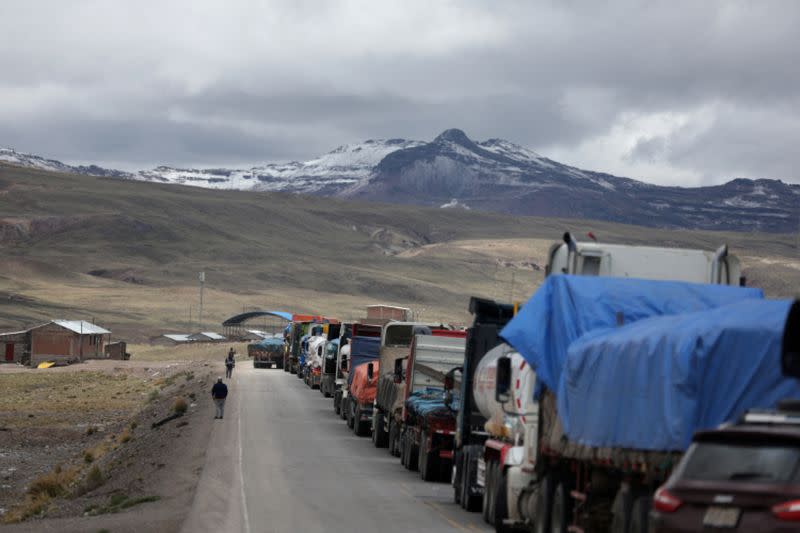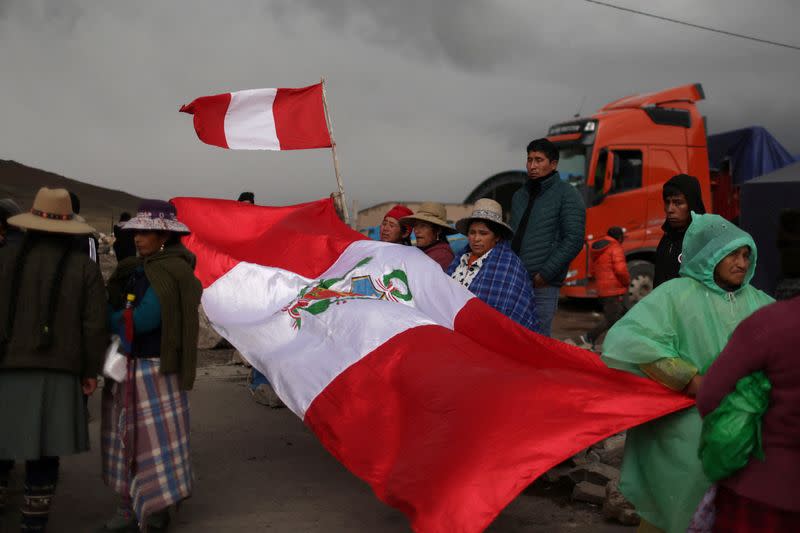Peru seeks mining investment revival with pledge to end 'chaos, disorder'
By Marco Aquino
LIMA (Reuters) - Peru is looking to put the "chaos" of months-long protests earlier this year behind it to revitalize flagging mining investment in the world's no. 2 copper producing nation, even as executives demand more stablity to boost spending.
As a mining conference in the southern Andean region of Arequipa got started this week, Prime Minister Alberto Otarola addressed concerns about political instability and protests that have led to an expected 18% drop in mining investment this year.
"We are not going to allow the country to fall into chaos, disorder and insecurity," Otarola told hundreds of gathered mining business leaders, adding the government was also working to streamline environmental permitting regulations.
In interviews with Reuters, senior executives said that while things had improved since major nationwide protests at the start of the year, governance remained weak, while unclear rules and red tape for issues such as using contractors and securing environmental permits remained an obstacle to new investment.
Copper output has rebounded this year, but sliding investment in the Andean country, which has had six presidents in the last five years, has put production and the wider economy at risk. Mining makes up 60% of Peru's total exports.
"There is concern because there is not much clarity regarding where the new government is going," said Raúl Jacob, vice president of finance at Grupo Mexico's Southern Copper, Peru's third largest copper producer.
He cited uncertainty around a law that limited the use of contractors that mining firms used, in part, to cut costs, which he said the government should repeal.
Peru's president Dina Boluarte took office late last year after former leader Pedro Castillo was impeached following an attempt to shutter Congress illegally. That sparked off months of deadly protests. Boluarte herself has weak popular support.
At the mining conference, Minister of Energy and Mines Oscar Vera argued that the government had "unlocked" nine projects this year, although all are expansions or medium-sized ventures.
The last major investment in Peru was Anglo American's $5 billion Quellaveco project, which came online last year and has helped buffer production figures.
Victor Gobitz, president of Peru's biggest copper mine Antamina - controlled by Glencore, BHP, Teck and Mitsubishi - said the constant political crisis mainly hurt investment in "greenfield" copper sites.
"For new mines, political risk and the lack of a clear mining policy is key," Gobitz, also the head of the main mining chamber, told Reuters by telephone, citing long waits to obtain mining concessions and risks linked to local community protests.
Gobitz said the government needed more "agility" to approve expansion projects, and should focus more on developing local areas around mines to avoid conflicts, often sparked by anger at mineral riches bypassing local communities.
"Peru has been growing and that is good, but at the institutional level we have not grown at the same speed, with the level of political maturity," he said. "We have a fragmented political system, which takes its toll on the entire country."
(Reporting by Marco Aquino; Editing by Adam Jourdan and Sonali Paul)


